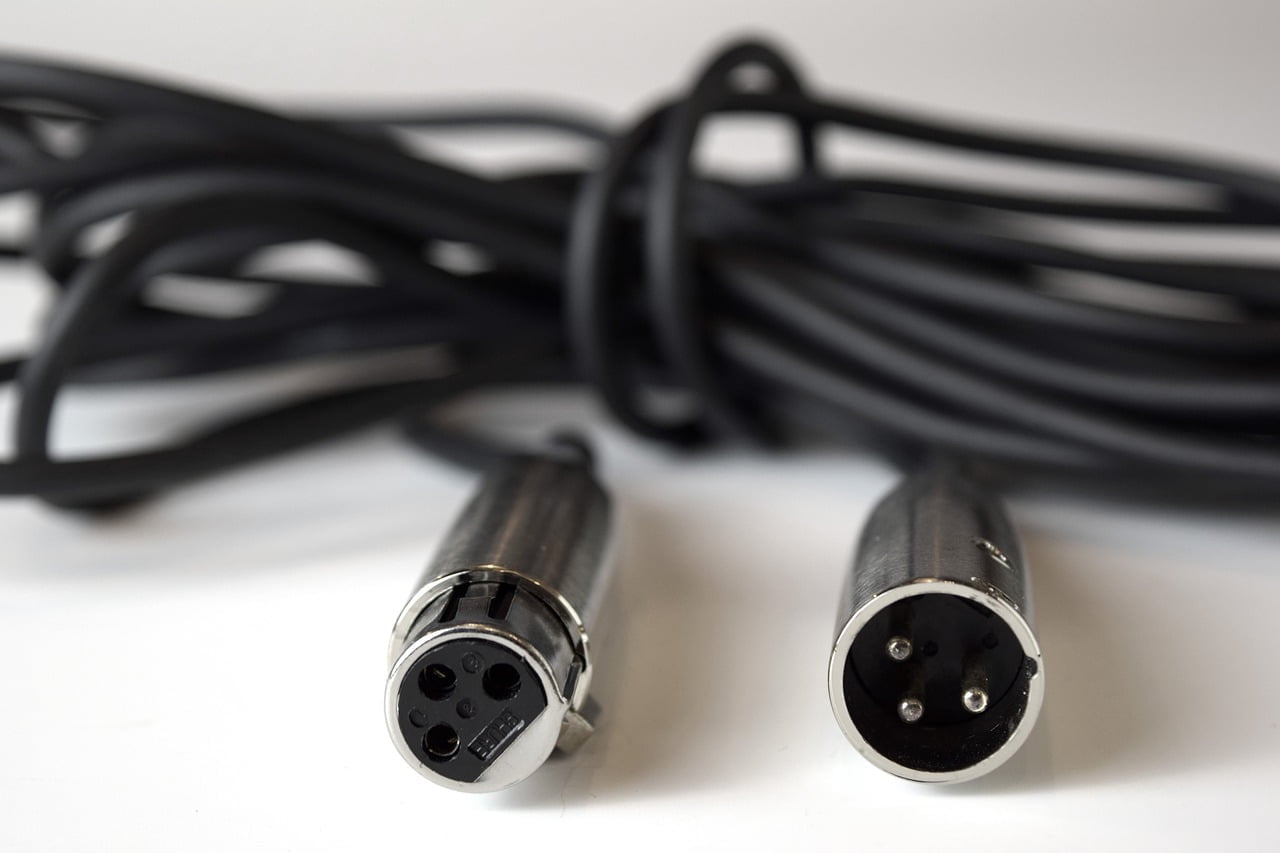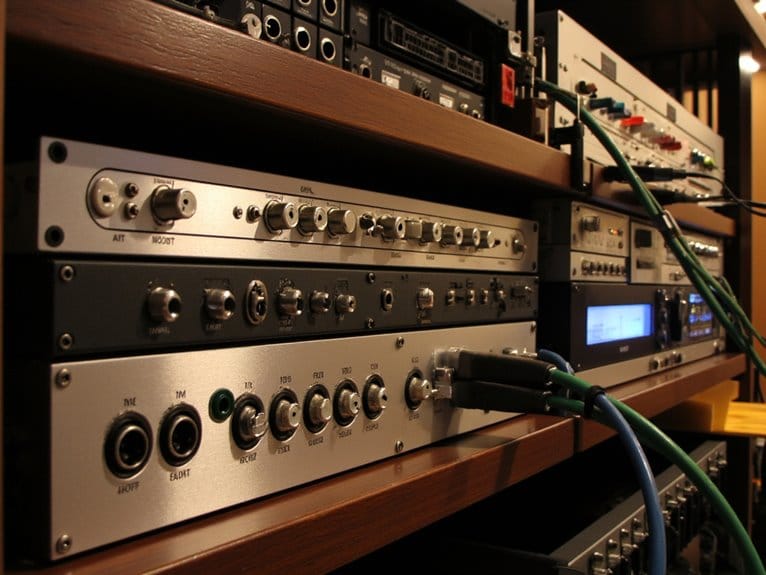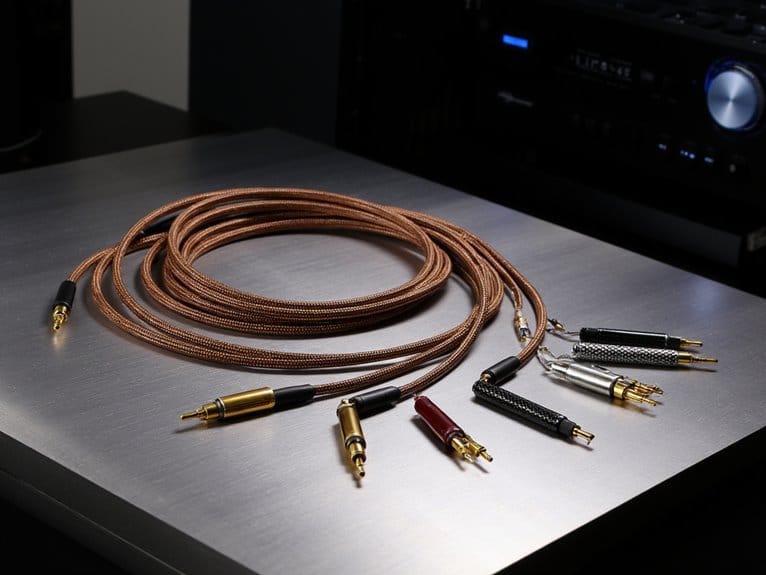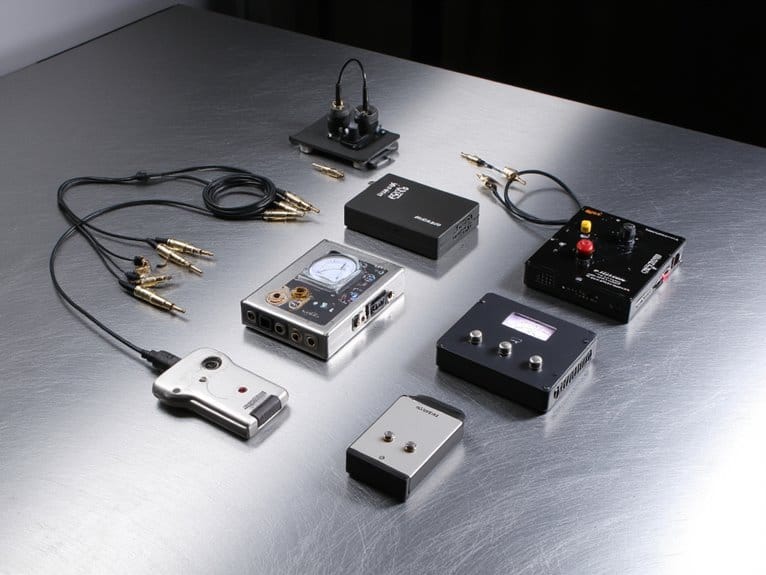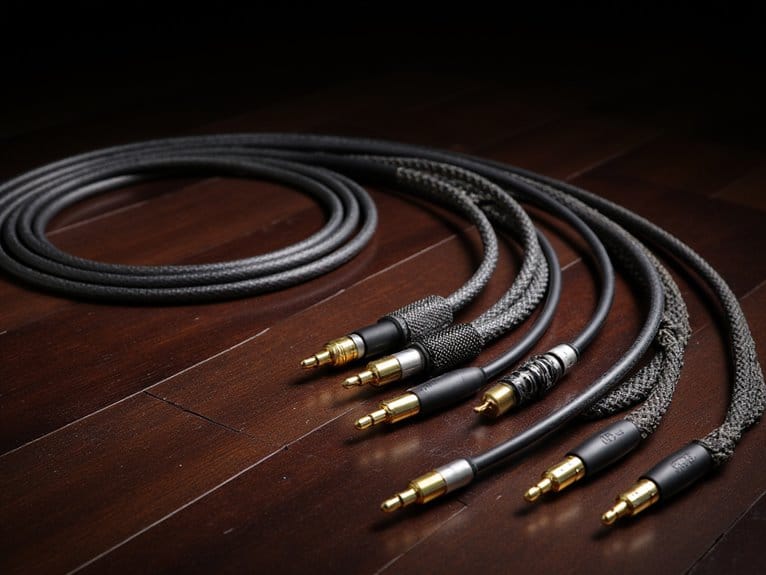Understanding Different Cable Types: XLR, TRS, and RCA
Hey there! If you're all about improving your audio setup, then understanding different cable types is a must. We've got XLR, TRS, and RCA cables, and they all play a big role in getting those sweet sounds from one place to another. So, let's dive into the basics of each cable type and see how they can level up your audio game. Trust me, by the end of this guide, you'll be able to pick the perfect cable for your specific needs. Let's get started!
We are supported by our audience. When you purchase through links on our site, we may earn an affiliate commission, at no extra cost for you. Learn more.
XLR Cables: The Basics
To understand the basics of XLR cables, you need to know what they are and how they function in audio systems. XLR cables, short for "External Line Return," are a type of balanced audio cable commonly used in professional audio applications. They consist of three pins, each serving a specific purpose: one for the positive audio signal, one for the negative audio signal, and one for the ground. This configuration allows XLR cables to transmit audio signals over long distances without significant loss or interference. Additionally, XLR cables have a locking mechanism that ensures a secure connection, preventing accidental disconnections during performances or recordings. The balanced nature of XLR cables also helps reject electromagnetic interference, resulting in cleaner and more accurate sound reproduction. In summary, XLR cables are reliable, high-quality audio cables that are essential for professional audio systems.
TRS Cables: What You Need to Know
Learn about the key features of TRS cables. TRS stands for Tip, Ring, Sleeve, which refers to the three different parts of the connector. This type of cable is commonly used in audio applications, allowing for balanced connections between equipment. TRS cables are known for their versatility, as they can be used for both stereo and mono signals. They are often used for connecting instruments like guitars and keyboards to audio interfaces or amplifiers. TRS cables come in various lengths, allowing for flexibility depending on your specific needs. It is important to note that TRS cables are not interchangeable with TS (Tip, Sleeve) cables, which are unbalanced. Understanding the key features of TRS cables will ensure proper connectivity and optimal audio performance.
RCA Cables: A Versatile Option
Now let's delve into the versatility of RCA cables, building upon the previous discussion of TRS cables. RCA cables, also known as phono cables, are a versatile option for various audio and video applications. These cables are commonly used to connect audio devices such as speakers, amplifiers, and sound systems. The RCA connectors are designed to transmit analog signals, providing a reliable and high-quality connection. With their distinctive red and white color coding, RCA cables simplify the process of identifying left and right audio channels, making setup quick and efficient. In addition to audio connections, RCA cables can also be used for video applications, transmitting composite video signals. This versatility makes RCA cables a go-to choice for home theater systems, professional audio setups, and multimedia devices.
Differences in Connector Types
Explore the distinctions among connector types to gain a better understanding of their unique features and functionalities. XLR, TRS, and RCA connectors are widely used in audio and video systems, each serving a specific purpose.
XLR connectors, also known as cannon connectors, are commonly used in professional audio applications. They offer balanced connections, which minimize noise and interference, making them ideal for long cable runs. XLR connectors have three pins, typically used for microphones, mixers, and speakers.
TRS connectors, or tip-ring-sleeve connectors, are commonly found in audio equipment. They can be either mono or stereo and have a variety of applications, including headphones, musical instruments, and audio interfaces. TRS connectors have three sections: tip, ring, and sleeve, allowing for balanced or unbalanced connections.
RCA connectors, also known as phono connectors, are commonly used in consumer audio and video devices. They are typically color-coded and transmit analog signals. RCA connectors have two or three pins, used for connecting devices such as televisions, DVD players, and home theater systems.
Understanding the differences in connector types is crucial when setting up audio and video systems. By selecting the appropriate connector type, you can ensure optimal performance and compatibility for your devices.
Understanding Signal Types and Applications
To understand signal types and applications, let's delve into the various ways XLR, TRS, and RCA connectors are utilized in audio and video systems. XLR connectors are commonly used in professional audio applications due to their balanced signal transmission capability. They are ideal for long cable runs and provide excellent noise rejection. TRS connectors, also known as "tip-ring-sleeve" connectors, are versatile and widely used in both professional and consumer audio applications. They can carry either balanced or unbalanced signals, making them suitable for various scenarios. RCA connectors, on the other hand, are primarily used in consumer audio and video equipment. They are known for their simplicity and ease of use, making them popular in home entertainment systems. Understanding these signal types and their respective applications is crucial in ensuring optimal audio and video performance in different setups.
Choosing the Right Cable for Your Needs
To choose the right cable for your needs, consider the specific requirements of your audio or video setup. The cable you select should be compatible with the devices you are connecting and should provide the necessary signal quality and reliability. For audio applications, XLR cables are ideal for balanced connections and professional-grade audio equipment. They provide excellent signal quality and noise rejection. TRS cables, on the other hand, are commonly used for stereo audio connections and are suitable for a wide range of devices. RCA cables are often used for consumer audio and video applications and are compatible with most home theater systems and audio equipment. Additionally, consider the length of the cable you need, as longer cables may introduce signal degradation. By understanding your setup requirements, you can confidently choose the right cable for your audio or video needs.
Conclusion
In conclusion, understanding the different cable types, such as XLR, TRS, and RCA, is crucial for anyone working with audio equipment. Each cable type has its own unique features and applications, with XLR cables providing balanced audio, TRS cables offering versatility, and RCA cables being a popular choice for consumer electronics. By knowing the differences in connector types and signal types, you can choose the right cable for your specific needs and ensure optimal audio performance.

